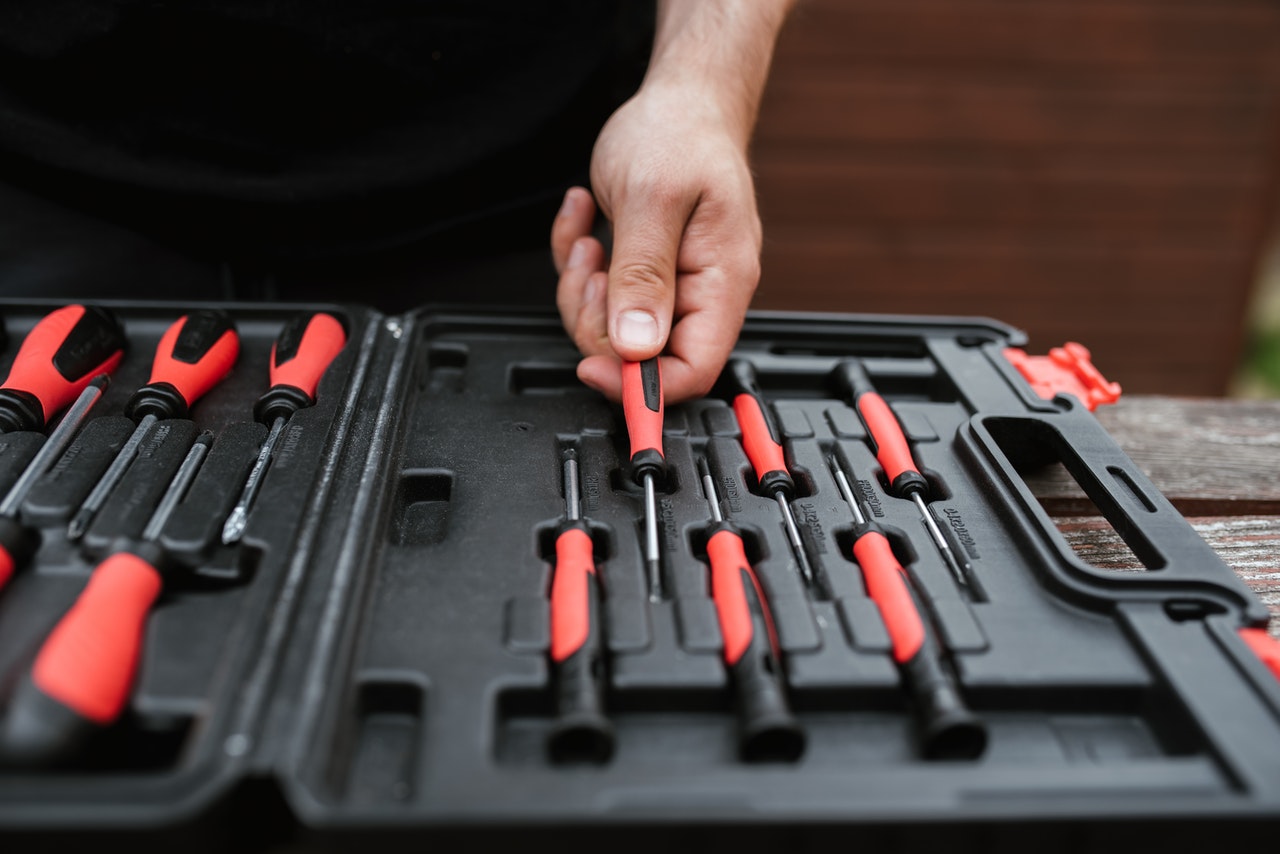25 Continuous Improvement Methodologies
Simple List of 25 Continuous Improvement Methodologies

With the help of continuous improvement methodologies, this world has progressed with leaps and bounds in the last 200 years from 1820 – 2020. Maximum inventions, patents, trademarks, books, researches, publications were made during these 200 years. In addition, this period witnessed the boost in entrepreneurship, improved economic conditions and height of technology developments.
Continuous Improvement is a matter of a mindset first that humankind should adopt and that is also the primary role of our being on this earth. Humans are the only living creatures who can think, analyze and improve their surroundings, no matter where they live.
Continuous improvement methodologies were always existent even in older times in one way or the other. But with passing years, especially, the last 200 years saw the heightened progress in the domain of continuous improvement methodologies that also came up with refined models and systems.
I will provide you with some overview of the available Continuous Improvement Methodologies, which may keep on adding from time to time.
List of 25 Continuous Improvement Methodologies

I am listing here some of the most known and used Continuous Improvement Methodologies from the simplest to the more complex ones:
1. 5 Whys
3. Catchball
4. A3 Report
5. Standard Work
6. 5S
7. Kaizen
8. Kanban
9. Hoshin Kanri
10. PDCA
11. PDSA
12. ISO
13. Value Stream Mapping (VSM)
14. SIPOC Analysis
15. Cause & Effect Analysis
16. Process Analysis
17. Lean Management
18. TQM
19. BPI
20. BPR
21. BPM
22. BPMN
23. Six Sigma (DMAIC)
24. Six Sigma (DMADV)
25. Lean Six Sigma
Lets Know More About These Continuous Improvement Methodologies ...

Now let’s go through briefly what these continuous improvement methodologies are for easy understanding.
1 - 5 Whys
‘5 Whys’ is based on the common sense approach. ‘5 Whys’ emphasize that you should ask ‘Why’ 5 times in a row. When you adopt the habit of asking questions, you sure can get to the root of the issues faster than those who don’t care to ask much. This philosophy is rooted in our mindset. When we dig deeper, we get the answers. Whether it is our personal life or work life.
‘Gemba Walks’ is one of the less complex and informal continuous improvement methodologies. Based on ‘Gemba Walks’ philosophy, when you move out of your office and meet the staff and start chatting with them informally about the work status and issues, probably you may get more data and answers correctly than calling them formally in a meeting room. This is what the ‘Gemba Walks’ are all about. It will also help you to pinpoint the areas for improvement.
3 - Catchball
According to ‘Catchball’, when you think of any improvement idea or project what you do is simply float it around among all the stakeholders. The aim is to get all the opinions, feedback as well as criticism about the idea and the project. Therefore, in return you may get lots of more ideas and feedback about how to get it done right.
4 - A3 Report
As the name says, this is A3 paper (double the size of A4). The idea is to develop the work status with all the good and bad points on the A3 paper. This helps to provide the snapshot in a user friendly way and immediately shows the problems and issues (if any).
5 - Standard Work
As the name says, when you continuously report and record the existing standard work It can provide you the progress status and you can be apprised about what to improve or not.

6 - 5S (Five S)
This is a one of the Japanese continuous improvement methodologies, which stands for
Seiri, Seiton, Seiso, Seiketsu, Shitsuke.
These have been accordingly translated into English as;
Sort, Straighten, Shine, Standardize, Sustain
As the words indicate, the philosophy of 5S is about organizing your work in a very systematic manner with utmost cleanliness and proper signage for everything, proper drawers of all tools, records, documentation and machines.
7 - Kaizen
Kaizen is also a Japanese word that means continuous improvement in small incremental way.
You can identify and select some small areas where you detect some problems are going on. You can use the Kaizen approach to analyze first and then improve it with the help of the process owners.
8 - Kanban
Kanban is Japanese word originated at Toyota which is based on visualization principles. That means you have to draw visual pictures of the processes that can be easily seen and understood. Kanban has been used effectively in maintaining the inventory levels.
9 - Hoshin Kanri
Hoshin Kanri is also a Japanese term and philosophy meaning that we should implement effective policy deployment from the strategic level in order to ensure that everyone is following the same goals in the organization.
10 - PDCA
This is also called a Deming’s Continuous Improvement Methodology. This stands for;
Plan, Do, Check and Act
It is a simplistic way of making improvements by following the 4 stages of PDCA. First, plan what you want to improve and how you want to improve, Do, implement the plan, Check, if it is working fine, Act, to sustain it or to again change it. Many Quality gurus considers PDCA as a base foundation for many other continuous improvement methodologies which came later equipped with new tools and techniques.

11 - PDSA
This is a slightly changed variant of PDCA methodology. Plan, Do, Study and Adjust.
PDSA cycle may help you more with the continuous improvement methodology. It may sometimes suit better due to the concept of ‘Study’ and ‘Adjust’. These two aspects actually help not to rest, rather keep on observing the improved process by continuous study and then keep on adjusting for the better. PDSA is one of the most direct continuous improvement methodologies with clear intent and objective to continuously improve the existing state of affairs.
12 - ISO (International Organization for Standardization)
ISO provides the framework with its own clauses to comply in order to make improvements. However, historically, the core emphasis has been on the documentation part, but in addition it also provides the full framework for the continuous improvement methodology. This eventually culminates in getting the ISO Certification for the relevant company operations/processes that confirms the company’s processes conforms to the customers’ requirements.
13 - Value Stream Mapping (VSM)
VSM is about analyzing the process from the perspective of value added activities. Value added activities are those that only serve the interests of the customers directly. All those remaining steps may be considered non-value added activities. Though it may happen that sometime, few activities may still be essential for the organization. As an example, a business process may have 20 steps. After a thorough analysis, there may only be 8 value added activities, 4 essential activities and 8 non-value added activities. In this case, you can remove all non-value added activities to make it leaner and faster.
14 - SIPOC Analysis
SIPOC stands for Supplier, Inputs, Process, Output and Customer
Although SIPOC usually is used as part of some big improvement projects under TQM, Six Sigma or others, but it can also help you improve the processes on its own in more simplicity. You can use the SIPOC model to understand the complete cycle of the process from start to finish to show any weak links and problems areas to remove or to improve upon.
15 - Cause & Effect Analysis / Fishbone Diagram
Cause & Effects Analysis is also called Fishbone Analysis as well as Ishikawa Diagram. It is most commonly used and enjoyed by the staff. It is one of the simplest continuous improvement methodologies available. This diagram is a fish shaped and the head of fish shows the actual problem or effects of the problem, and all the body bones of fish will represent the possible causes for the problem or effects. The causes, usually can be categorized into machine, material, methods, people and environment.

16 - Process Analysis
Process Analysis also provides you with standalone approach for any continuous improvement. You can simply identify that process which you think is creating problems, do the detailed flowcharting once again and analyze it from many different angles and variations. This will help you to fix the issues there and then.
17 - Lean Management
Lean Management started more in the manufacturing environment but it now stretches to the service sector as well. The key philosophy is that every process has some waste or unnecessary activities. We have to find and kill the unnecessary waste to make it smoother, faster, efficient and effective.
18 - TQM (Total Quality Management)
Total Quality Management aims to embed Quality principles in terms of eliminating defects and increasing the customer satisfaction. TQM starts from the top and moves down to the grass root levels, gradually reviewing and improving all work areas and processes.
19 - BPI (Business Process Improvement)
As the name says, every company works with business processes, irrespective of the fact that they are good or bad. BPI is one of project driven continuous improvement methodologies which selects one process at a time or may be more depending upon the available resources. Then it starts diagnosing the process for any problems, defects, errors and delays in order to further improve upon with systemic tools.
20 - BPR (Business Process Reengineering)
Business Process Re-engineering is more advance level methodology than the BPI. BPR can completely revamp the existing process and change the paradigm. Easy example is the airline e-ticketing system which now can also be booked and printed at home.

21 - BPM (Business Process Management)
Business Process Management is about first managing the processes at a single place and monitoring it for any issues and deviation. And then systematically moving forward to address the problems with special BPM tools and techniques.
22 - BPMN – Business Process Modeling Notation
Business Process Modeling is typically done with the help of software. It helps to draw various process scenarios to show how the new version can function before you actually finalize and implement it.
23 - Six Sigma (DMAIC)
Six Sigma is one of the most robust continuous improvement methodologies. It is based on the 5 phases of the DMAIC framework that stands for Define, Measure, Analyze, Improve and Control. It is based on structured scientific principles and data driven improvement methodology. It has produced very solid results for many big corporations in the world which has resulted in saving billions of dollars for those companies. Six Sigma is a project based improvement system, and single project may take from 1 to 6 months of time to complete.
24 – Six Sigma (DMADV / DFSS)
Another variant of Six Sigma is DMADV (Define, Measure, Analyze, Design and Verify) or Design for Six Sigma (DFSS). This variant is specifically applicable for the new processes and new products. However, it moves through the same Define, Measure and Analyze phases and then later it splits its route to design a new process or product.
25 - Lean Six Sigma
Combining Lean and Six Sigma can provide you with double power by adding the strength of Six Sigma. However, Lean Six Sigma will follow its own methodology of DMAIC or DMADV to aim for the reduction of waste and to make the process faster in speed. Lean Six Sigma adopts the project based approach with laser precision targeting for process improvements.
Summing Up

The above 25 continuous improvement methodologies can help you get the overall feel of the each before you finally decide which one may suit you better for the desired purpose.
Although selecting the right Quality model itself is a challenging process that should be done with care and with better insight. In case if you select the wrong technique for the right purpose, you may not get the full desired results.
As you may also understand that each tool or model is a complete science, that requires its own special place to elaborate and master it before applying it. I will also encourage you to explore more on these 25 continuous improvement methodologies separately. You can also check out the article
In case you will want to ask more, you can also contact me anytime here.
Image Credits: All article images provided by Pexels.com